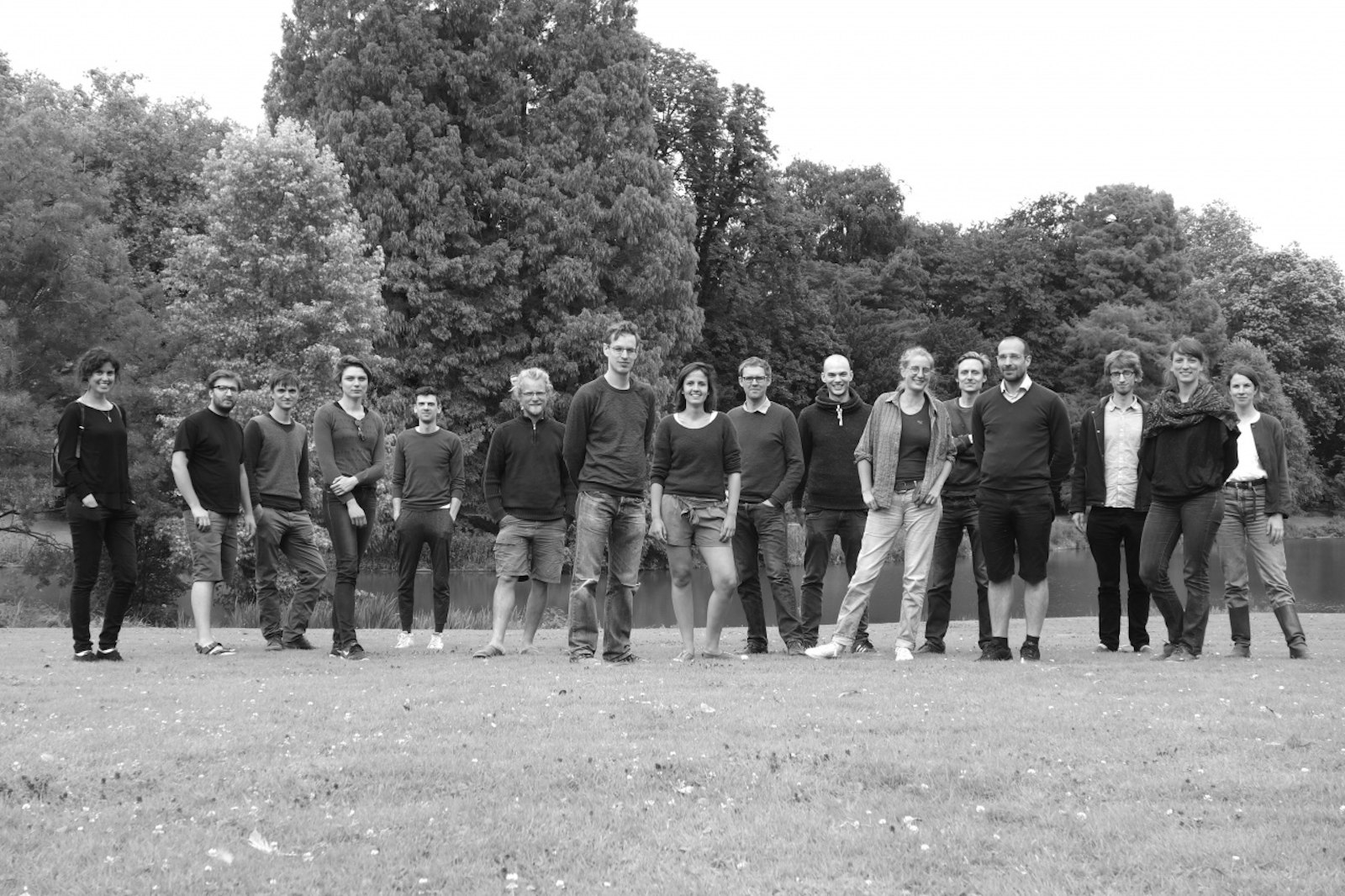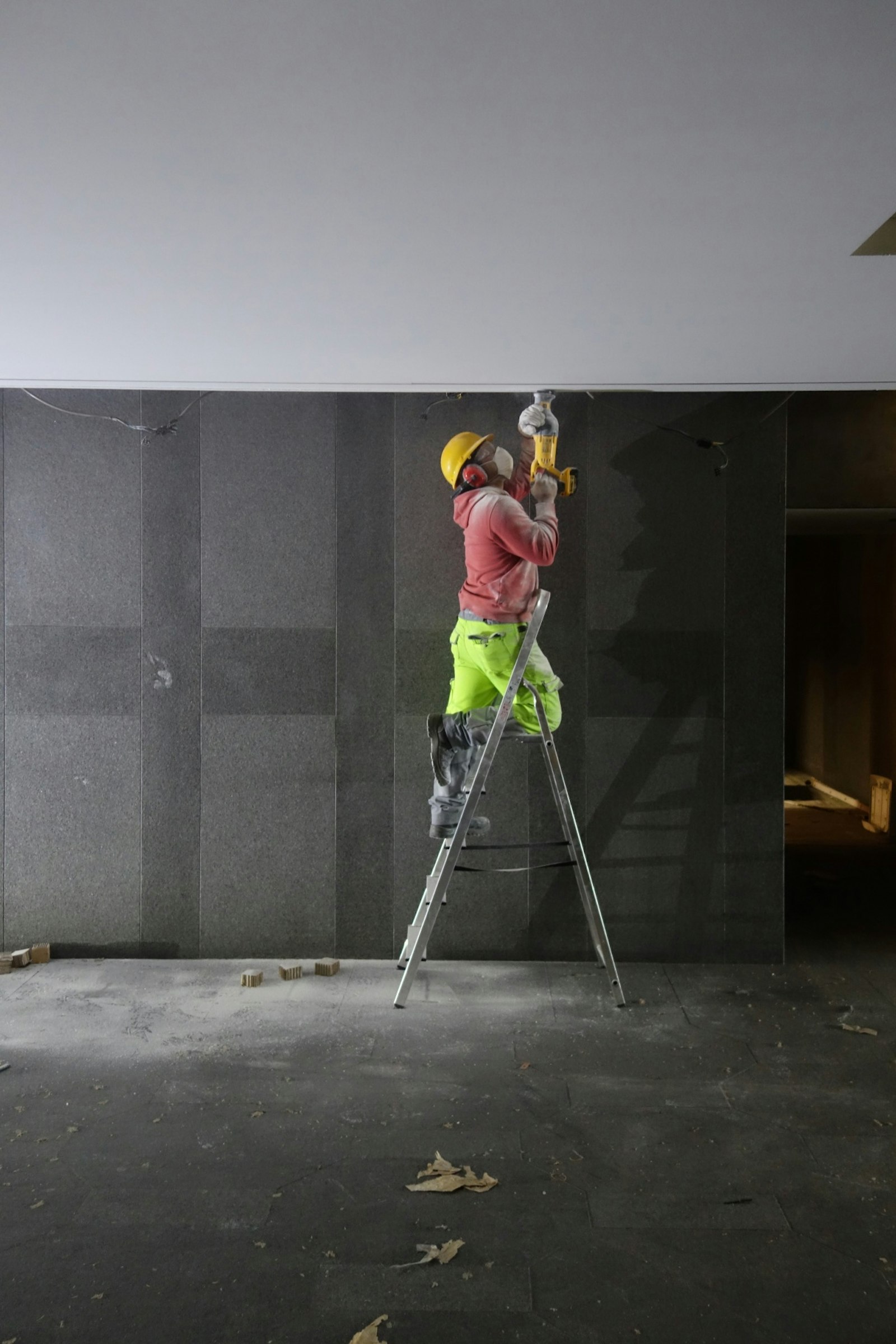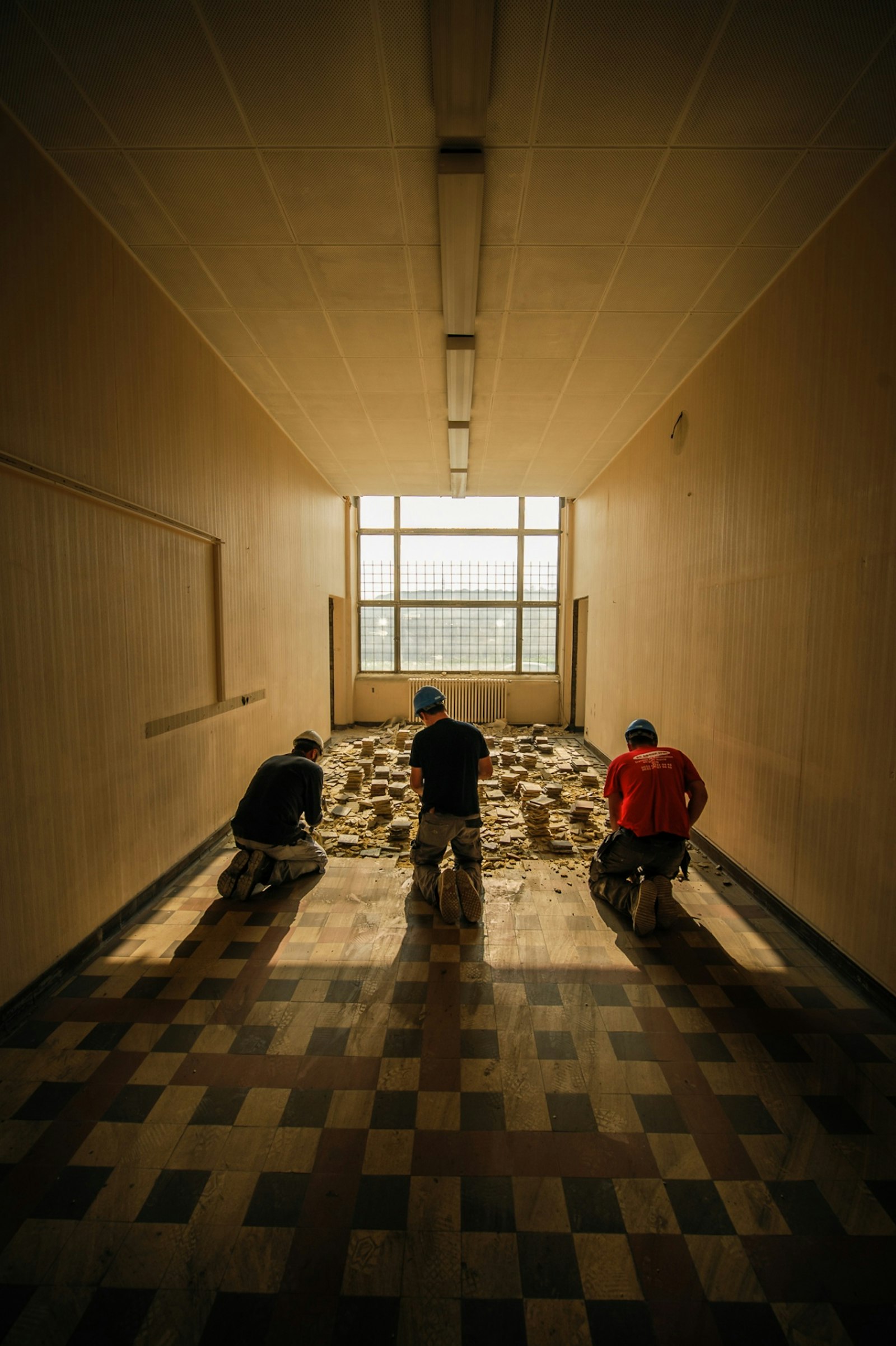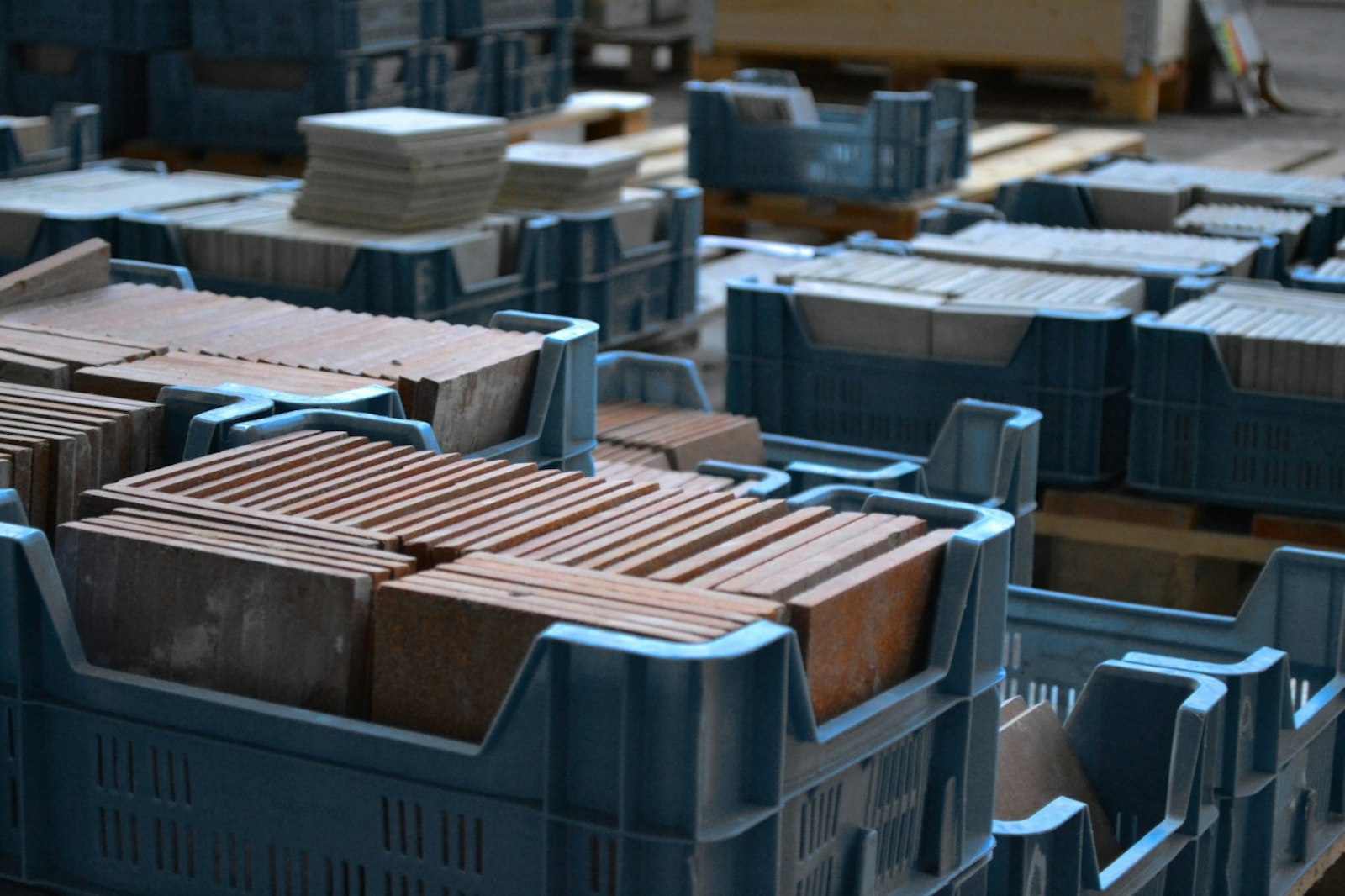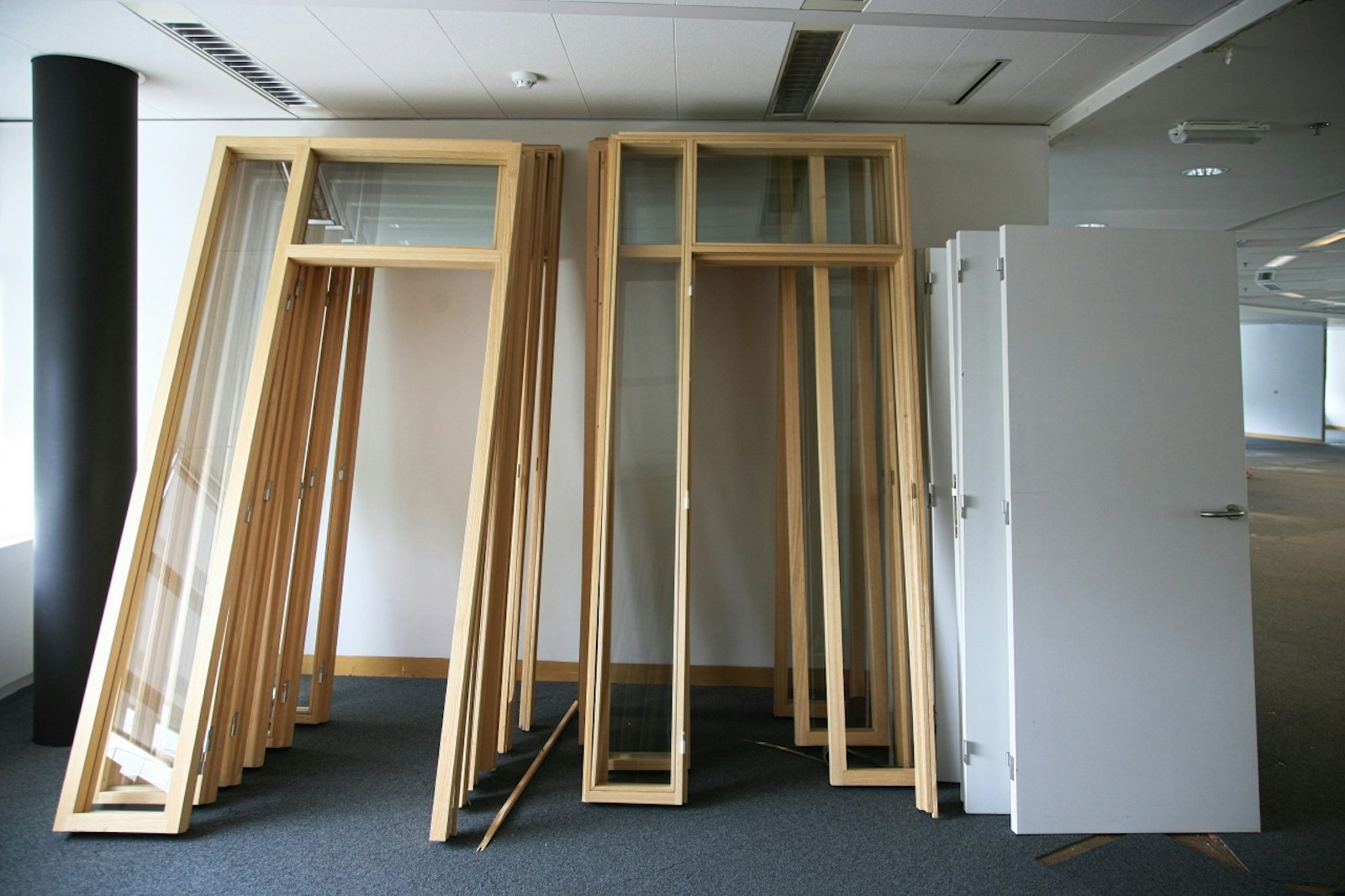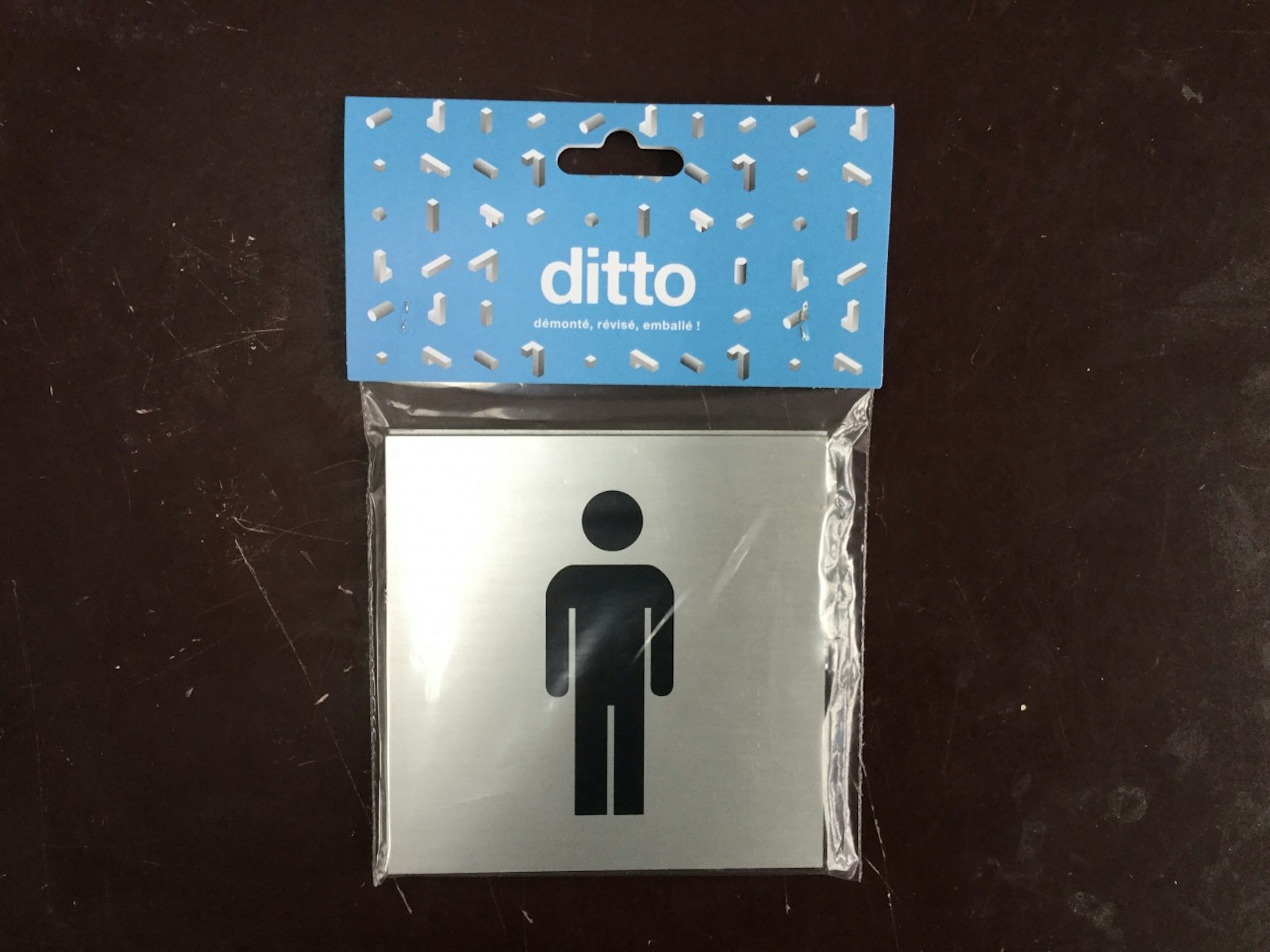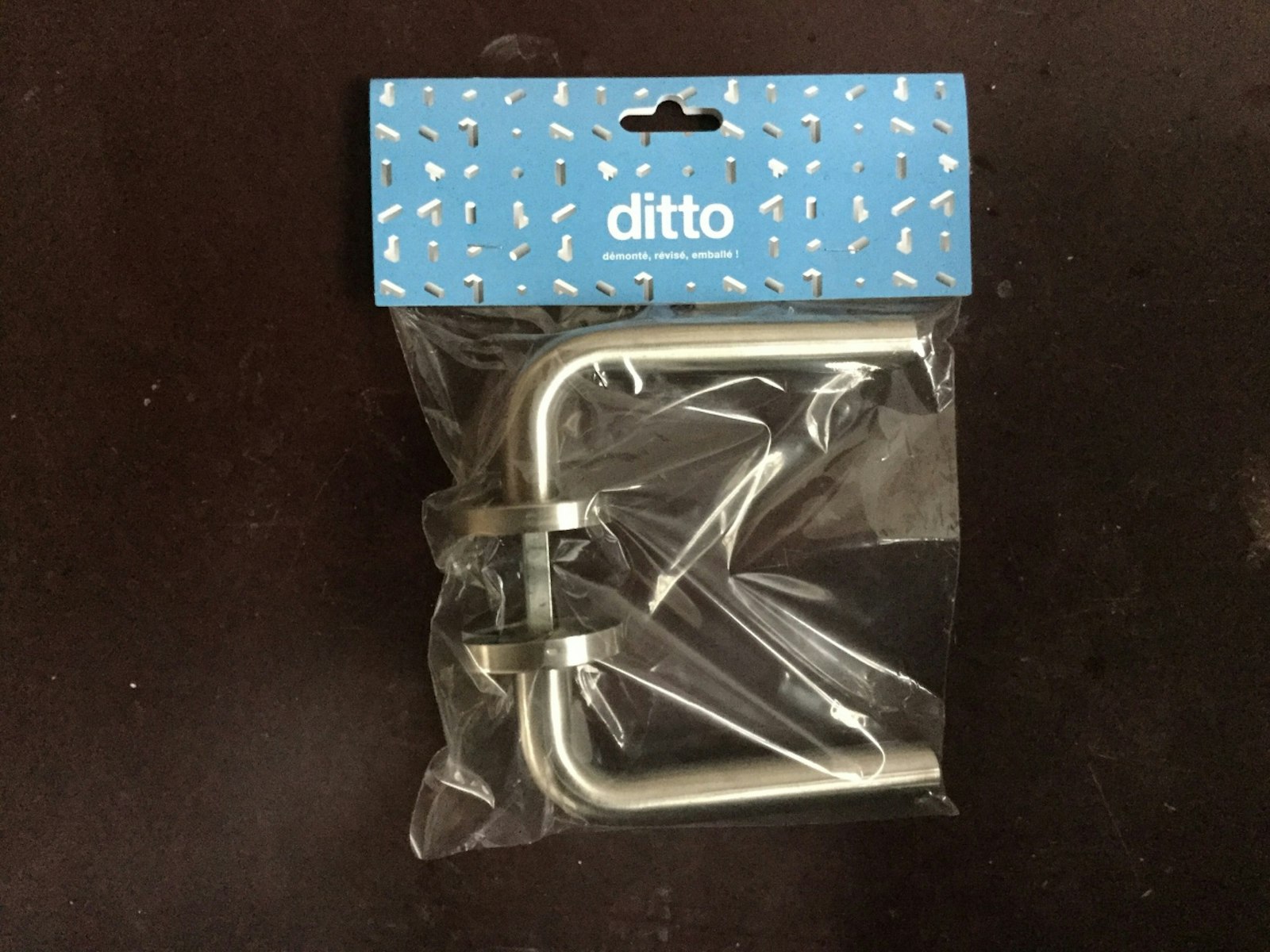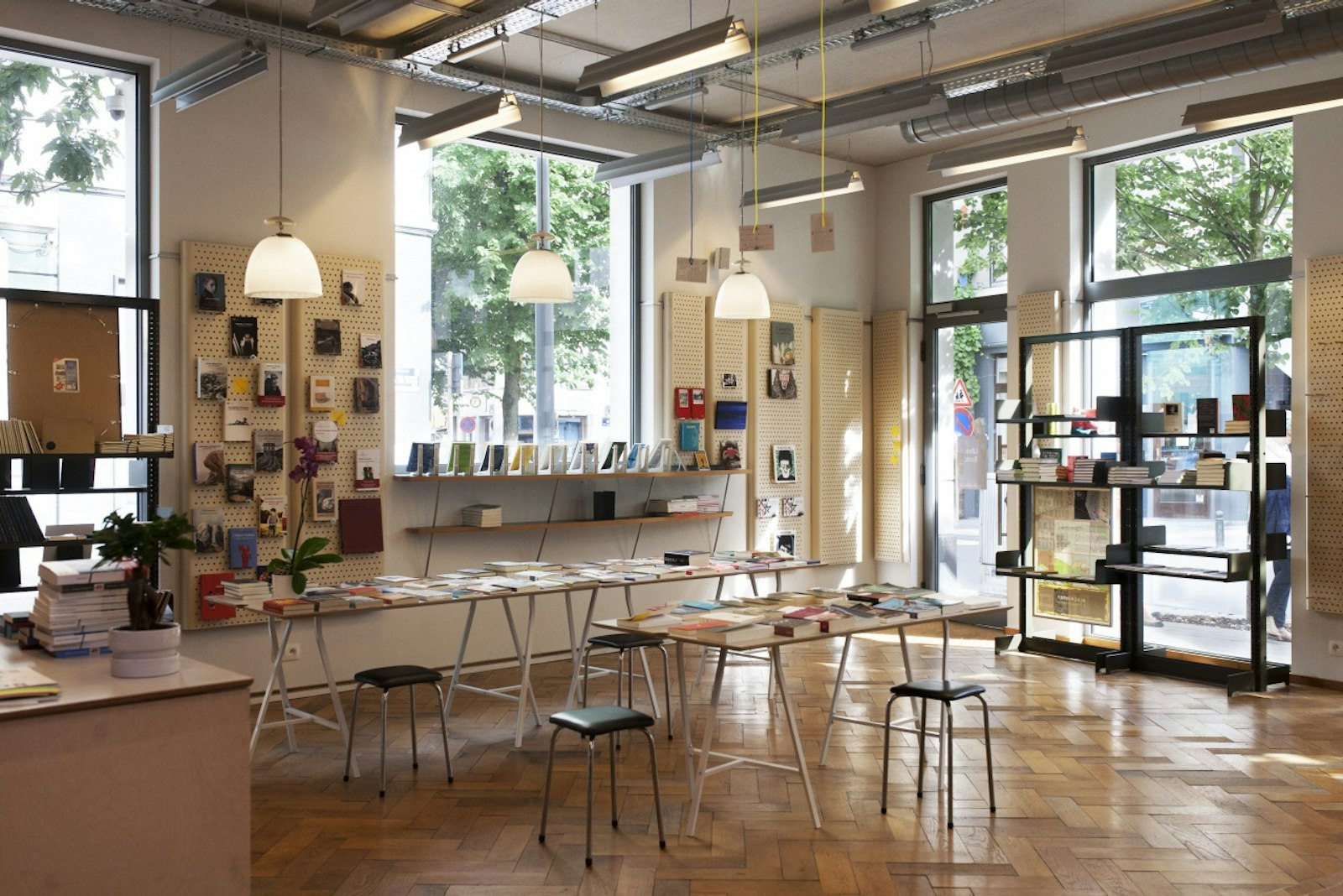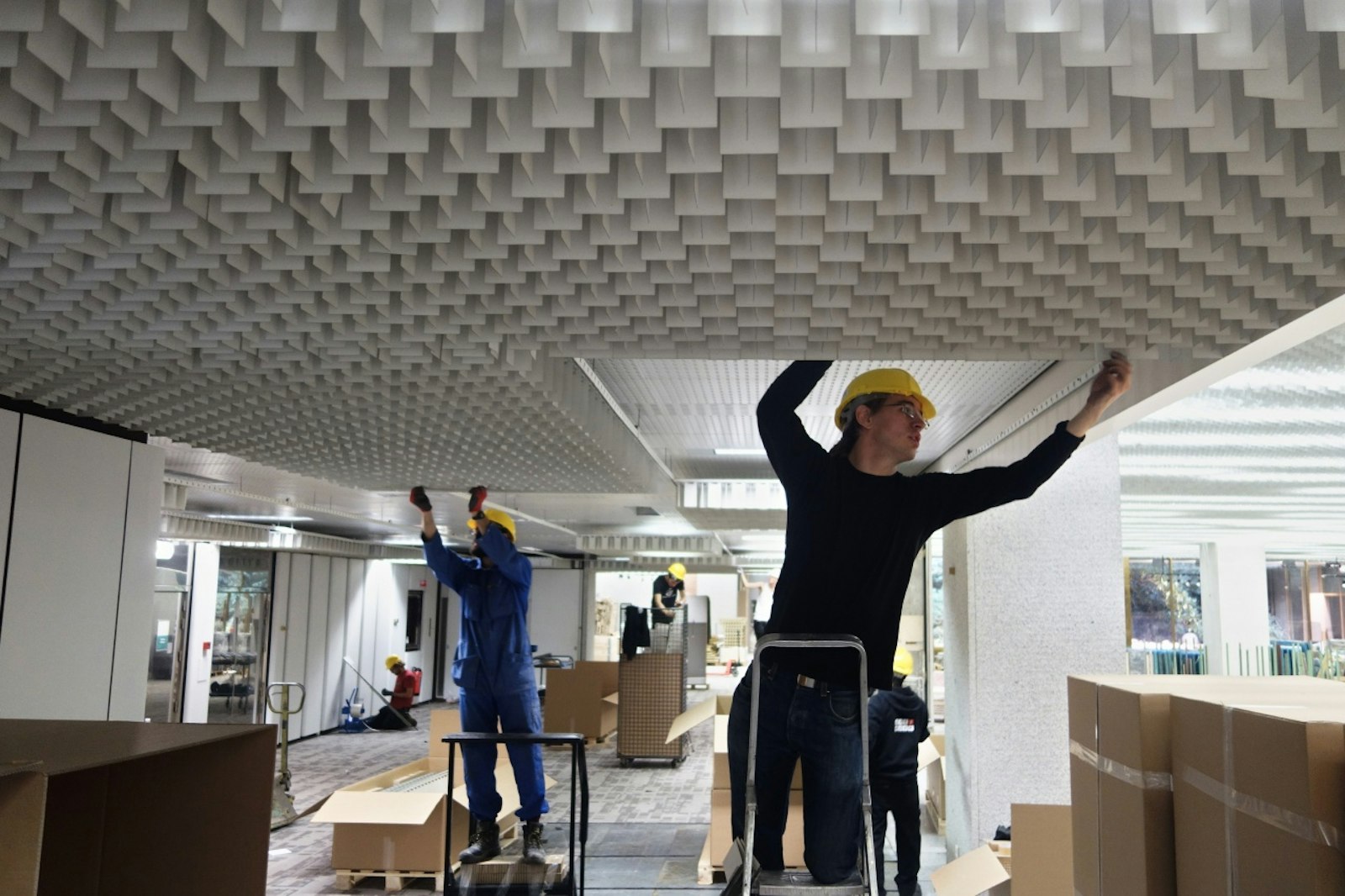de Velde
Rotor Deconstruction
Rotor Deconstruction is an autonomous side-project of Rotor, a Brussels-based non-profit.
It was created in 2005, engaged in promoting and facilitating the re-use of building components as a strategy on the path towards a more resource-efficient materials economy.
Its main focus is the reclaiming of re-usable parts of postwar and modern architecture.
In 2012-2013, Rotor conducted a survey of all existing dealers in second hand building materials in Belgium. The results of that survey are public: opalis.be. Doing this study, Rotor realized that, despite an increasing professionalization of the sector, many vendors are still focusing on rustic materials destined for the domestic, (neo-)rural market. Few of them are geared to selling what comes out of large building compounds of the service sector, which make out the bulk of demolition debris in metropolitan areas such as the Brussels Region. Rotor Deconstruction grew out of the realization that certain dots here needed urgent connexion.
Consistency and common sense: that’s the secret behind Rotor. In 2005 this Brussels collective got single-minded about recycling, and especially about the reuse of building materials. They look at it from every angle: theory and aesthetics, but also politics and culture. And above all: the practical.
Maarten Gielen comes and says hello to me in his work trousers. “I’ve literally just stepped off the site”. He and Tristan Boniver, Michaël Ghyoot and Lionel Devlieger set up the Rotor collective in 2005. They started out by wading through the industrial waste bins of factories in Brussels. Then they built a database of what they found, to give others access to workable materials. They soon discovered that there was beauty out there, and they used beautiful castaways to lend weight - at exhibitions in Germany and the Venice Architecture Biennal - to their message of “why throw what you can use away?” They won over not only Miucca Prada, who invited them to do something with her stock catwalks, but also Rem Koolhaas, who invited them to rummage through the archives of his OMA firm. They curated the Architecture Triennal in Oslo and published a critical book on sustain - ability. They produced study reports, furbished buildings and were brought in as consultants in the public and private sectors. They set up the website, opalis.be, to provide a list of addresses of useable building materials to contractors and architects. They also conceived a highly accessible expo in Luik, for the most recent Reciprocity Design Biennal. And about two years ago, they launched Rotor Deconstruction, which is best described as a waste processing company. Hence Maarten’s work trousers. And hence Rotor’s staff of about 20: half are architects, researchers and designers, the other half labourers. And sometimes one does the research, the other does the labour.
In 2013 Rotor was contacted by a large office real estate company that renovates enormous areas of office space every year. They wanted to know if there was anything Rotor could do with old materials that came free in the process.
Maarten Gielen: “We listed everything that we found in the buildings and started searching for potential destinations. They insisted that we operate on a neutral budget, so we looked at materials with enough value to fund their own dismantling. And there were quite a few, it soon turned out. We’ve kept the business model for Rotor Deconstruction. To begin with, we didn’t have a depot. So we transported the items directly from the demolition to the construction site. However, now we have a hybrid model. Much of what we move doesn’t actually pass through the depot anymore, certainly the lion’s share of the weight and volume. Take concrete paving slabs: it doesn’t make sense to move them twice. It makes them too expensive. But you can add value to an already valuable piece by displaying it to the right people, at the right time, in the right circumstances.”
Lego
Rotor Deconstruction spends most of its time on office spaces, which is only logical, or so Maarten thinks: “It is standard practice, at the better office buildings in Brussels, to leave only the shell of the office at the end of the lease. This generates a huge turnover in materials. We have come to work for five of our original property developer’s biggest competitors in the meantime: because the system works.”
Maarten compares the modern office building to a massive Lego set. They use systematised construction techniques: they repeat a door or a wall a hundred times. “Many of the materials are designed to be movable and have to be able to be used any number of times. This is the recycler’s dream, because architects can get cracking. However, the lack of a market for these materials tends to disrupt the process on a systematic scale.” “Because there are no operators” adds Lionel Devlieger. “The world of the contractor revolves around the supply and fitting of materials. There is no such thing as a contractor who moves materials from site to site. But Rotor does. “The problem is that it takes three skill sets,” Maarten goes on to explain. “Firstly, an architect, who can assess a component’s value and usability; then a contractor, who has a practical understanding of how the materials can be dismantled and what it will cost; and finally, a removals firm and its specialist expertise. Much of the damage to materials occurs after they are removed from a building. What is the best way, for example, to transport vast quantities of plate glass? It takes an awful lot of thinking about. So we have the removal firm, the contractor and the architect, but precious few can stand in for all three. And that’s the role that we have taken on. We list the contents of about six or seven buildings a week. It made sense for us to develop an app, to make the process faster and more efficient. We upload photos, dimensions and fitting instructions, give everything a bar code and send it off. Other contractors and architectural firms wouldn’t bother developing something like that for one site.”
Rotor doesn’t have much in the way of competition, and what it does have concerns the more rustic and precious building materials. Parquet, marble and fireplaces, for example, are taken to specialist dealers.
Door handles in plastic bags
Demolition is one side of the Rotor Deconstruction story, but fitting and finding clients is the other. “On the one hand, you have near antique, tiny volume, but very high value items, such as Jules Wabbes lamps, hatstands and chic office furniture... This we sell through our own website, or even through auction houses. And on the other, you have large volume materials of lesser value. We’ll transport things like used wooden floors from the Muntschouwburg to a shop that sells ecological building materials. There, the planks will sit among the other planks on the site, to be bought by contractors who will use them to temporarily seal a window, protect a floor or make a formwork for a concrete beam. Small items, such as handles from doors and cabinets, we polish and stick in a plastic bag with a bar code on it. These bags hang in the DIY shops here in Brussels, alongside new products but at a slightly better price. Providing a product is actually providing a service. If a handle is twenty miles away you probably won’t drive there, but it works well when you are offered a choice at your doorstep. Customers have all kinds of reasons for buying. It might be purely economic, it might be due to ecological convictions or it might be for historical or cultural considerations.”
Design & build
“We are still a design firm and this is an aspect that is very important to us. For example, we built the Parodi book store in Brussels of materials from a variety of buildings in Brussels and Ghent. And in 2018 we will be furnishing new offices for the social housing association, De Zonnige Kempen. The thing about us is that we use the design&build principle: we are the designer and builder rolled into one, and this principle is promising in the context of recycling. In the calibrated public procurement process, for example, the designer is appointed first; he or she then chooses the materials and the specifications are drawn up. Several contractors are then invited to tender and the best is chosen from among them. However, we think it much better to compete with the design and build in a single tender. In the case of an office building we might say: we have these materials at our disposal, we know of a contractor who works with them and we propose such and such a refurbishment. That ought to yield the best value for money.”
Rotor first noticed that a simple price quote might be enough when UGent asked them to think up some new ideas for the bookshelves in the Library Tower, which was being renovated by Robbrecht & Daem. “They started by asking us if we were interested in any of the shelves, but those shelves were fitted when the building was made. In actual fact, the columns of the building are spaced to suit the standard shelf sizes, not the other way round. The problem was that the shelves had to be removed for the renovations. Your average contractor would charge quite a fee to take the shelves apart, store and then return them, precisely because he wouldn’t have a ready solution. This route was logically abandoned in the first round of savings, to simply order new shelves. We suggested a separate quote for the shelving. They compared our price for careful dismantling, listing, deconstruction, storage and reconstruction against an offer for new shelves. And what were the results? Our quote to reuse the old shelves was more competitive than the quote for new shelving. Some of the tower’s more recent bookshelves actually were sold, and ended up in quite a few people’s living rooms.
Rotor encountered a completely different kind of heritage in Wallonia. Maarten: “We dismantled a university building in Liege, which had thousands of square metres of ceramic tiles, in a different pattern in each room. We were able to salvage about a third. We are now cleaning them by a method we devised ourselves. The tiles are in perfect condition and saleable at a very reasonable price.
Lionel still wants to tell us about one of the main arguments for recycling building materials, i.e. embodied energy. “These tiles were fired at Cerabel (Henegouwen) in the nineteen thirties, in extremely high temperature kilns, and a lot of CO2 was released in the process. These tiles actually lock in a quantity of CO2. If we can reuse them, we will save all the CO2 that would otherwise be released to make a new floor. The tiles are still in perfect condition and we can’t write them off yet, although obviously an economist would have done that long ago.”

